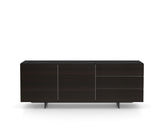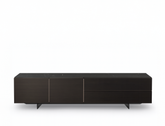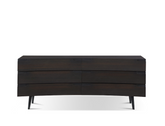Foam or Spring Mattress - Which One Wins?

Choosing the perfect mattress can be a daunting task, with the battle between foam and spring mattresses at the forefront of many shoppers' minds. This comprehensive comparison aims to shed light on the essential differences, benefits, and drawbacks of each, assisting you in making an informed decision tailored to your sleeping needs.
Understanding Foam Mattresses
Foam mattresses, celebrated for their plush comfort and supportive contours, stand as a popular choice among sleepers. Here’s a closer look at the variety this category offers:
Polyurethane Foam Mattresses: Known for their adaptability, poly foam mattresses come in various grades, from the affordable conventional polyfoam to the durable high-resiliency options. Despite their comfort, some poly foams may not stand the test of time, especially with constant use.
Memory Foam Mattresses: Evolved from NASA’s innovation, memory foam mattresses excel in contouring the body, offering unmatched pressure relief. They are available in traditional, plant-based, and gel-infused varieties, catering to different preferences and needs.
Latex Mattresses: For those seeking a bounce with an eco-friendly twist, latex mattresses offer a resilient and breathable sleep surface. Whether you opt for natural, synthetic, or a blend, latex provides a unique feel that combines support with environmental consciousness.
Pros and Cons of Foam Mattresses
Pros: Foam mattresses offer a range of firmness levels, are excellent for motion isolation, and can provide significant pressure relief, making them a great choice for various sleeping styles.
Cons: Some foam mattresses can trap heat or emit off-gassing smells, and the feeling of sinking may not appeal to everyone.
Exploring Spring Mattresses
Spring mattresses, or innerspring mattresses, have been a staple in the mattress industry, known for their firm support and breathability. Types range from the traditional Bonnell coils to the innovative pocketed springs, each with its unique benefits.
Bonnell Spring Mattresses: These traditional mattresses provide firm support, suitable for stomach and back sleepers, though they may lack in motion isolation and edge support.
Pocketed Spring Mattresses: Offering a modern take, pocketed coils excel in reducing motion transfer and providing targeted support, blending the benefits of innerspring breathability with foam-like comfort.
Pros and Cons of Spring Mattresses
Pros: Spring mattresses promote air circulation for a cooler sleep, offer a firmer support ideal for certain sleepers, and tend to be more budget-friendly compared to high-end foam or hybrid options.
Cons: The potential for noise, limited motion isolation in traditional models, and a tendency to sag over time can detract from the overall sleep experience.
Foam vs. Spring: Key Differences
Sleep Position and Weight Considerations: Foam mattresses adapt to the body, offering relief and support tailored to various sleeping positions and lighter sleepers. In contrast, spring mattresses provide a firmer, more uniform support, catering to heavier individuals and those who prefer sleeping on their back or stomach.
Temperature Sensitivity and Motion Transfer: Foam mattresses, especially memory foam, can retain heat, whereas spring mattresses usually stay cooler. When it comes to sharing a bed, foam offers better motion isolation, reducing disturbances from a partner's movements.
Durability and Price: Spring mattresses may show signs of wear sooner due to coil compression. Foam mattresses, particularly high-density and latex options, generally offer longer-lasting support. In terms of investment, spring mattresses often present a more cost-effective solution upfront, though foam mattresses can offer greater longevity and satisfaction for some sleepers.
FAQs
Is a memory foam mattress better than a spring one? The choice between memory foam and spring mattresses boils down to personal preference. Memory foam provides excellent contouring and pressure relief, while spring mattresses offer more traditional support and breathability.
Should I buy a foam mattress? If you value pressure relief, minimal motion transfer, and a variety of firmness options, a foam mattress could be an excellent choice for you. Consider your specific needs, including temperature regulation and budget.
What is the primary difference between memory foam and spring mattresses? The core difference lies in their construction: memory foam mattresses use viscoelastic foam that molds to the body for pressure relief, whereas spring mattresses rely on coils for support, offering a firmer, more responsive sleeping surface.
In conclusion, whether you lean towards the enveloping comfort of foam or the robust support of spring, understanding your personal sleep preferences is key to choosing the right mattress. Don't hesitate to leverage trial periods offered by many manufacturers to find your perfect match for a restful night's sleep.
Ready to shop for your next mattress? Take a look at Prestige Affairs vast collection of high-quality mattresses that will surely give your sleep a significant upgrade.







